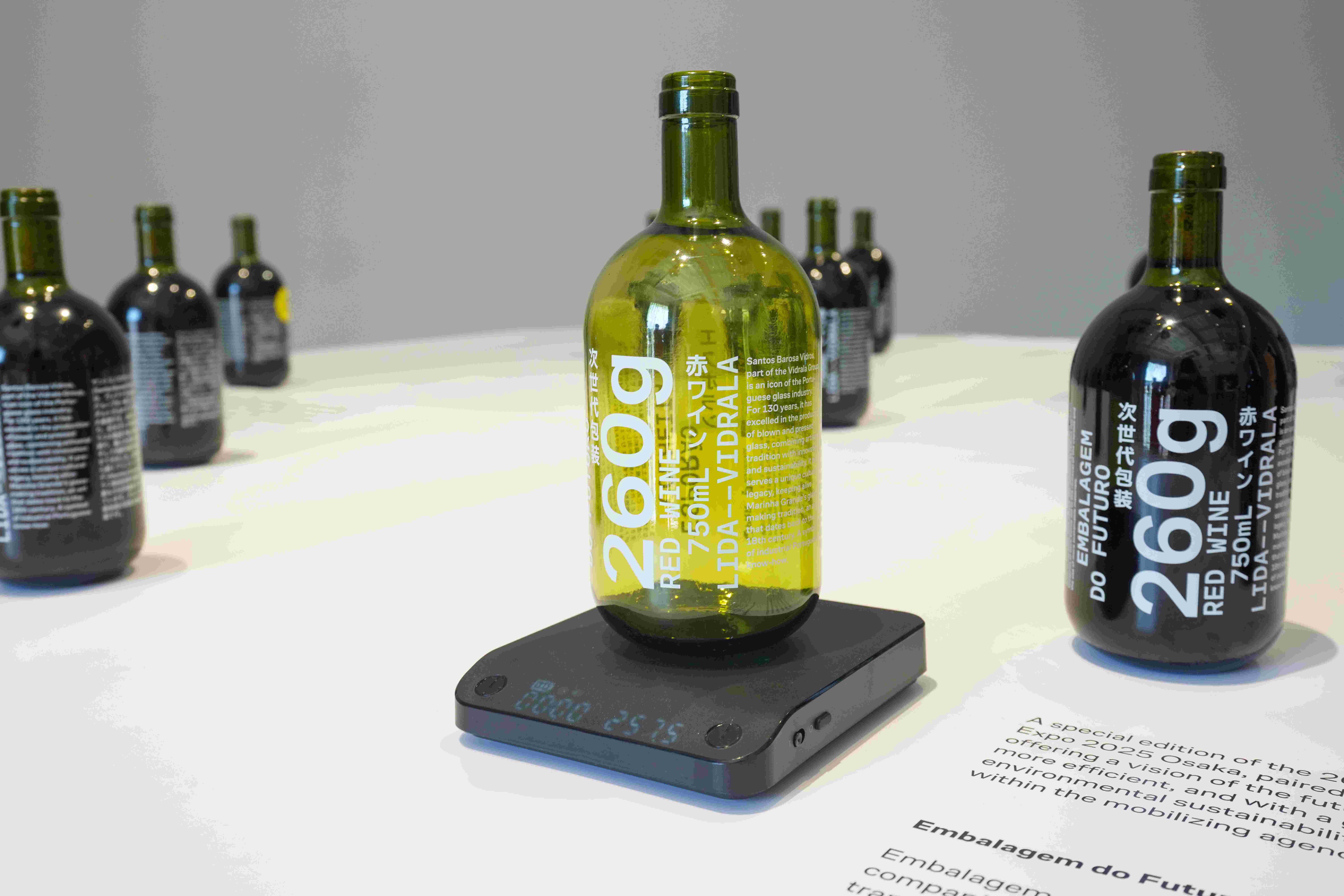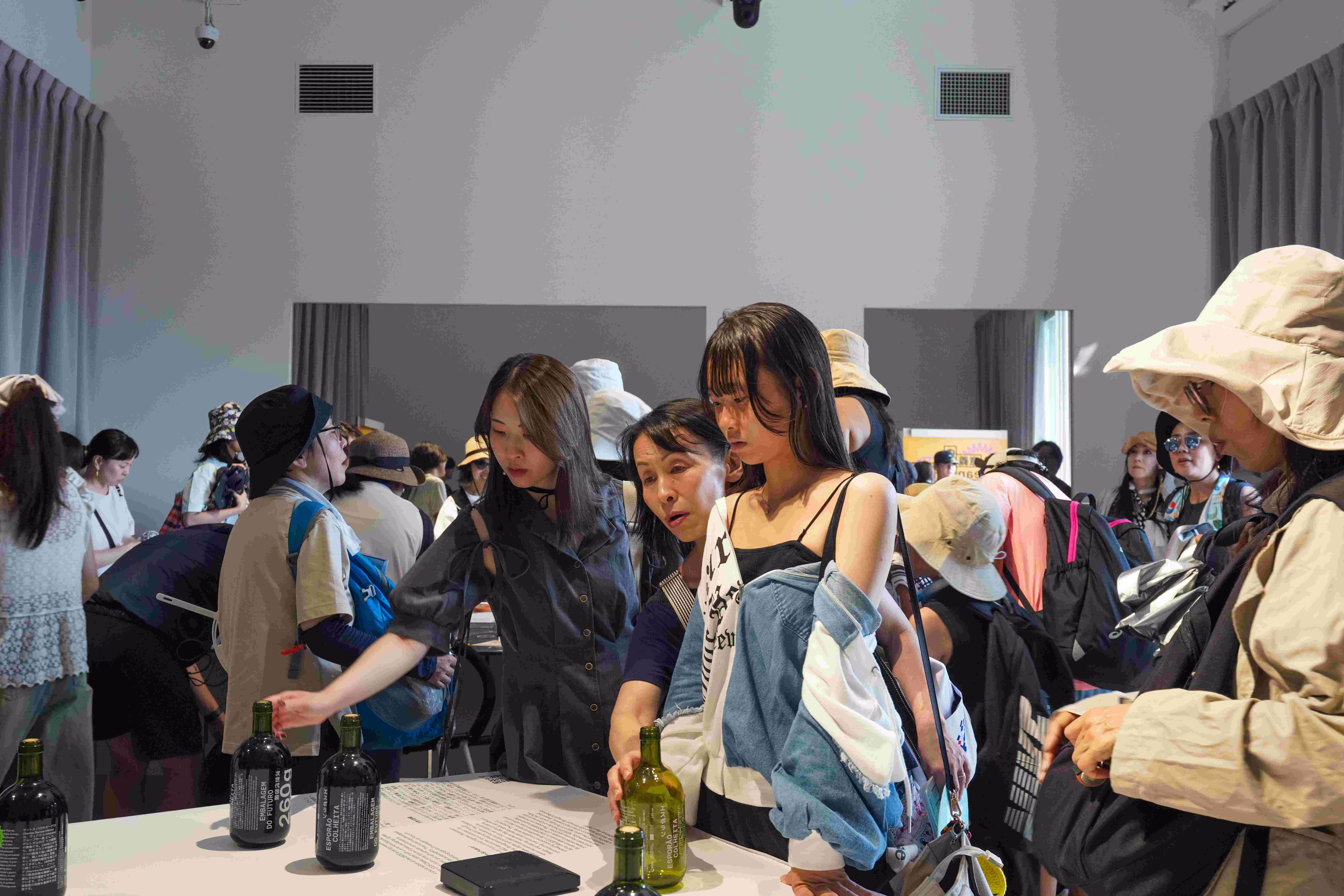On August 8 and 9, the Portugal Pavilion at Expo 2025 Osaka hosted the Packaging of the Future® exhibition, where the world's lightest wine bottle was presented to the Japanese and international audience — a 100% Portuguese product weighing only 260 grams and containing up to 80% recycled glass.
Santos Barosa (Vidrala Group) developed the 0.75-litre bottle using advanced technological processes in collaboration with LiDA, the Design and Arts Laboratory of the Polytechnic Institute of Leiria. Thanks to its optimised geometry and ultra-thin walls, it reduces the glass surface by 20%.
This innovation is part of the Packaging of the Future® agenda, led by NERLEI—the Business Association of the Leiria Region. The initiative involves 79 companies, universities, and research centers and has a total investment exceeding €104 million. It aims to develop greener, smarter, and more inclusive packaging solutions, strengthening the competitiveness of Portuguese industry and advancing the circular economy.
Santos Barosa (Vidrala Group) developed the 0.75-litre bottle using advanced technological processes in collaboration with LiDA, the Design and Arts Laboratory of the Polytechnic Institute of Leiria. Thanks to its optimised geometry and ultra-thin walls, it reduces the glass surface by 20%.
This innovation is part of the Packaging of the Future® agenda, led by NERLEI—the Business Association of the Leiria Region. The initiative involves 79 companies, universities, and research centers and has a total investment exceeding €104 million. It aims to develop greener, smarter, and more inclusive packaging solutions, strengthening the competitiveness of Portuguese industry and advancing the circular economy.

LiDA is recognised for its research and innovation work in design and the development of sustainable solutions, working closely with cultural institutions, research entities, and companies across various sectors. For Renato Bispo, director of LiDA, this project exemplifies the value of such partnerships:
"We work hand in hand with cultural institutions, research centres, and companies to create solutions that combine aesthetics, functionality, and environmental responsibility. This bottle proves what can be achieved when knowledge is shared and skills complement each other. We hope this is just a glimpse of the future — a future with more ecological, sustainable, and innovative Packaging."
The exhibition sparked great curiosity and enthusiasm among visitors, who praised the bottle's lightness and innovative design and its contribution to reducing environmental impact. Many highlighted the importance of solutions like this in inspiring real change in the global packaging sector.
More than a technological breakthrough, this bottle is a clear example of how Portugal, through cooperation between institutions, is building a future of more ecological, functional, and innovative Packaging.
"We work hand in hand with cultural institutions, research centres, and companies to create solutions that combine aesthetics, functionality, and environmental responsibility. This bottle proves what can be achieved when knowledge is shared and skills complement each other. We hope this is just a glimpse of the future — a future with more ecological, sustainable, and innovative Packaging."
The exhibition sparked great curiosity and enthusiasm among visitors, who praised the bottle's lightness and innovative design and its contribution to reducing environmental impact. Many highlighted the importance of solutions like this in inspiring real change in the global packaging sector.
More than a technological breakthrough, this bottle is a clear example of how Portugal, through cooperation between institutions, is building a future of more ecological, functional, and innovative Packaging.




